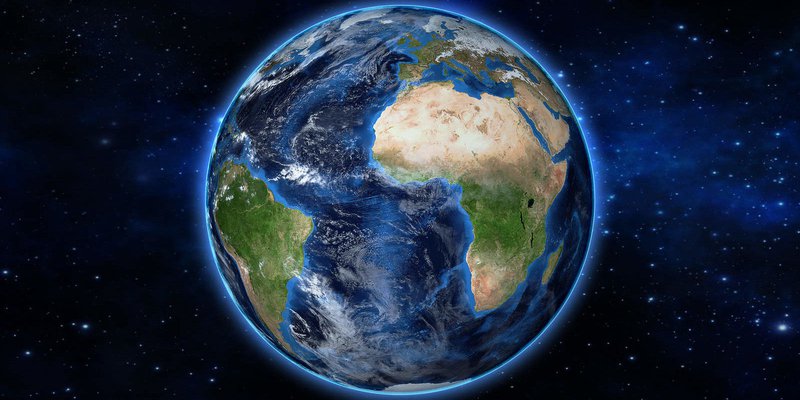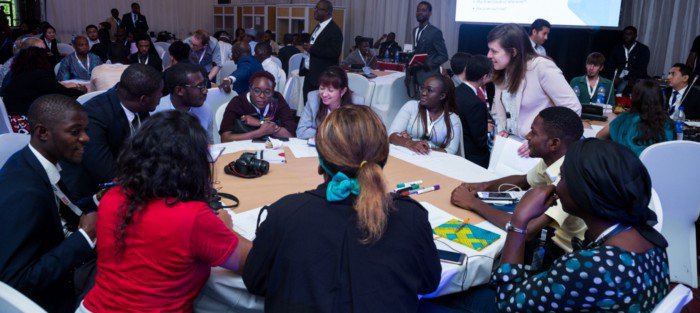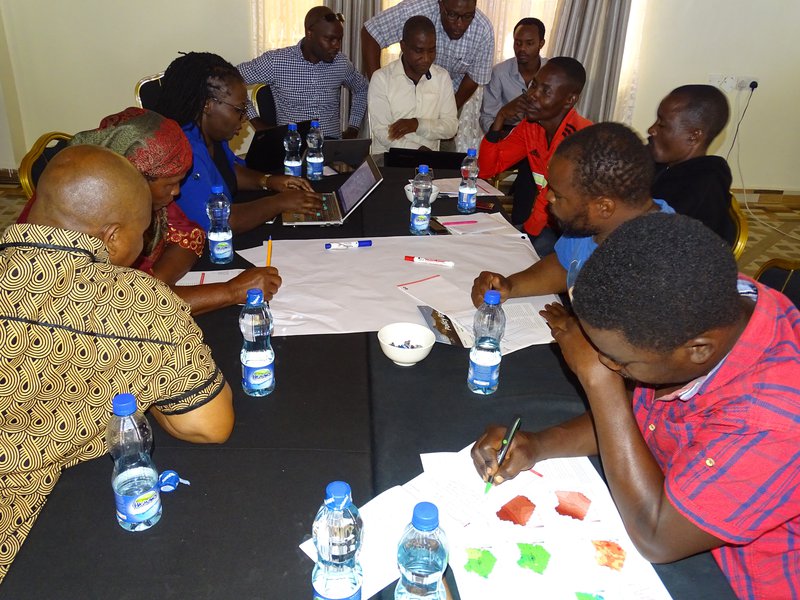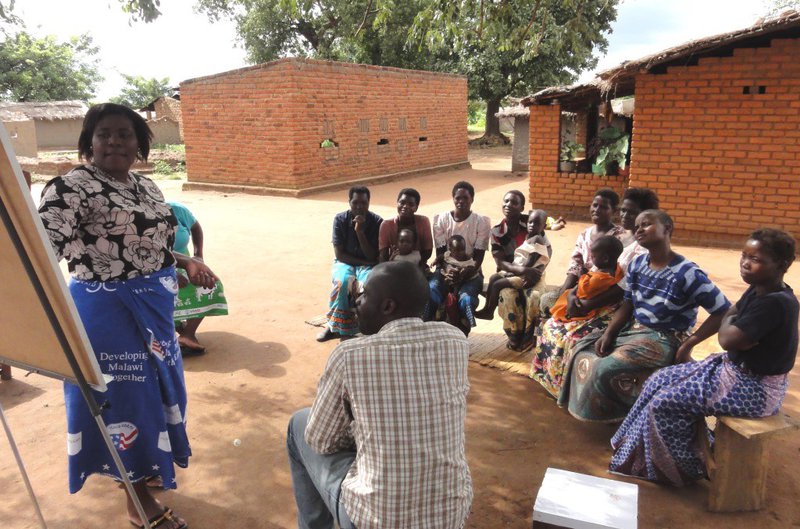Enhancing Media and Meteorological Agency Engagement in Eastern Africa
By Collison Lore
With contributions from the ICPAC Climate Change Technical Working Group

The media has over the years worked closely with meteorological agencies in Eastern Africa. Some of the hallmarks of the working relationship has been the regular reporting of weather forecasts and discussions on climate issues including disaster reduction communication. This is good, however with the recently released report from the U.N.’s Intergovernmental Panel on Climate Change (IPCC) that provides the strongest case yet for human-caused global warming, it is imperative that the media and meteorological engagement be boosted significantly. It is evident that the challenges posed by climate change require a not business as usual communication approach.
Critical communication constraints
The media and the meteorological agencies in the region face critical resource constraints. In Eastern Africa, most countries have liberalized their media and radio stations have sprung up across the region. Over 500 FM stations dot the regional landscape. This is both a blessing and a challenge. A blessing in the sense that the outlets of weather and climate communication have increased considerably. A challenge in the sense that the management of some of these radio stations are ‘stuck in the weather forecast zone of broadcasting.’ This means that the radio station management considers the one-minute slot on the weather forecast as being sufficient coverage of weather issues during a period of 24 hours. Other radio stations lack the required expertise to package weather and climate information for the diverse audiences that they serve in the region. The media and meteorological constraints are thus revolving around two issues financial and technical resources.
Approaches
A consistent and constructive engagement between the media and meteorological agencies in Eastern Africa can be an ideal way to reach a wider audience in covering climate issues. Working with the media can help to inform and educate different groups, inspire people about new discoveries or explain poorly-understood issues. To be effective it requires careful planning and consideration. There are a number of approaches, some of which have been used in the region effectively.
Roundtable Discussions
A roundtable discussion refers to an organized dialogue with one moderator, several chosen speakers that brings a variety of perspectives to a subject, and an audience who may simply observe or participate by asking questions. In this context the media and the meteorological agencies in the region can invite the private sector, government agencies and civil society representatives to roundtable discussions on weather and climate. Such discussions can unlock challenges of finance and technical resources. If the corporate sector provides sponsorship of branded shows in the media while the meteorological agencies on the other hand provide technical information that is broken down by the media outlets to meet the needs of their diverse audiences. This type of engagement led by the meteorological agencies and the media in the region is an effective tool in unlocking much needed resources to address the challenges of climate change communication. The unlocked resources can thus be used to boost the understanding of grassroots farmers, pastoralists and fisherfolk in Eastern Africa. This is because through roundtable discussions, the private sector can commit financial resources, while the civil society can influence government policy and the media can ably provide the various channels and outlets as required. The IPCC’s findings will likely feature prominently in the discussions, in Glasgow, Scotland, during the 2021 U.N. Climate Change Conference.
While preparations for this important conference proceed, it is essential that the media and meteorological agencies in Eastern Africa begin experimenting with the roundtable discussions approach that brings together the media, meteorological agencies, private sector, civil society organizations and government agencies in seeking answers to effective climate change communication.

© un.org
Season Media Action Plan (SMAP) Approach
It is well within the right of critics to view the, roundtable discussions as being elitist and sometimes out of touch with the existing realities on the ground in the context of weather and climate. This is where the Season Media Action Plan (SMAP) comes into the picture. Countries in Eastern Africa that have adopted the decentralized approach to offering climate services such as Kenya are ideal for the use of the SMAP approach. This is because at the sub-national level (county government in the case of Kenya) the actors receive specific information that relates to weather and climate in their localities. This allows the media and other actors such CSOs to interrogate the seasonal forecast, with a view to breaking it down to the end users in a specific locality.
The SMAP approach brings together diverse actors at the sub-national levels led by the meteorological agency and the media. Private sector actors, famers and other stakeholders are also well represented. This allows the actors to jointly plan the season (including updates) and together working towards ameliorating the adverse effects of climate change.

Participatory Scenario Planning Forum SMAP session between media, Kenya Meteorological Department and representatives of other stakeholders such as farmers, ITK experts and NGOs in Taita Taveta County, Kenya
Climate Baraza Approach
The two previous approaches discussed are helpful, however as indicated before, SMAP works more effectively in countries where climate services have been decentralized. Whereas it is applicable to non-decentralized countries it is essential to adopt an approach that serves the countries that have centralized meteorological services. This is where the climate baraza approach fits well. The word baraza in Swahili means a public meeting. The media and meteorological services with support from key actors, such as government and private sector can organize targeted public meetings or baraza’s addressing climate issues. This is because the bulk of the population in Eastern Africa is rural based and hence face some of the most critical challenges in the context of climate change. The public baraza approach is already being applied in a number of countries — the only difference is introducing weather and climate elements.
Public barazas are organized by local chiefs, community leaders and if the media and the meteorological agencies leverage on these existing and trusted structures to reach out to vulnerable communities’ climate change communication will be much easier.
These public barazas can bring traditional forecasters and other key stakeholders, and targeted to specific areas that are vulnerable to climate change. The most geographically vulnerable locations to climate change are those that will be impacted by side effects of natural hazards, such as rising sea levels including dramatic changes in ecosystem services, and access to food.
It is essential therefore in countries of Eastern Africa that are yet to adopt the decentralized mode of providing climate services prioritize on the use of the climate baraza approach. They can select areas vulnerable to climate shocks and possible disasters with the media and meteorological agencies working together to ameliorate these challenges. This approach also provides a useful platform for accountability from affected population because it emphasizes public accountability through feedback.

Merits of media and meteorological agency engagement
There are many merits that can be served by engaging with the media. For instance informing and educating different groups about weather and climate issues. Furthermore, it empowers both the local and national audience to contribute to ongoing public debates concerning climate change issues.
Engagement also serves to highlight and explain important yet little known, or poorly understood issues of weather and climate. It is easy to assume that all audience are the same, engagement however, encourages new conversations with new audiences for example the youth in the region.
Engagement between the media and the meteorological agencies may also serve to attract interest from potential funders or partners in matters of climate change communication.
